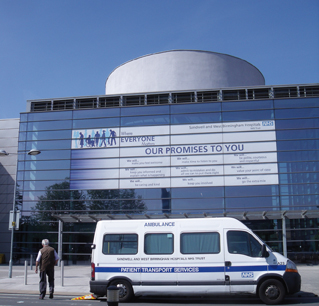Mark Rowe reports on the healthcare sector, now with specialist training courses for staff beyond the SIA minimum.
As we reported in our December issue, the regulator the Security Industry Authority (SIA) last year finished its second ever major review of ‘the competencies that are core to the role of a security operative undertaking licensable activities’ The exam awarding bodies HABC, City & Guilds, Pearson BTEC, NOCN and IQ, and BIIAB for door supervision, had to bring in changes – tweaks to course content rather than big changes – to their qualifications in January, as taught by trainers.
Core knowledge
The amount of time for the training necessary to take the exams to pass so as to apply for an SIA licence has stayed about the same since the SIA began taking door staff applications, ten years ago. A grumble among some in guarding – besides the abiding complaint that in-house guards needn’t pass any training that contract guards have to, for the same job – is that the SIA licence training does not fully fit a guard for work. In fairness the SIA has not pretended it does; it speaks of the ‘core knowledge and skills required to do their job professionally and without endangering the public’. In other words, beyond the core, guards in specialist fields ought to be further trained – and that’s for employers to judge, and not only for security work. To paraphrase SIA chief executive Bill Butler, an accountant by background: when he qualified as an accountant, he could hardly expect to be taken on by a big firm at once. In other words, in any profession, beyond the minimum licence to practise, you can and should qualify to do specialisms. That can prove tricky, for one thing because an exam awarding body that puts its name on courses, and trainers that learn to deliver those courses, might not see a large enough number of takers of the course for it to be economic. Think perhaps of guard dog handling, or campus security. A healthcare security officer e-learning course was officially launched in November at the annual NAHS (National Association for Healthcare Security) conference. The trainer behind that course is Jim O’Dwyer of AEGIS.
Healthcare
The National Health Service, as one of the largest employers in Europe, can do things on a large scale. The conflict management training of NHS staff – medics, not only security – must be the largest single security training undertaking in the UK. Just as security officers at a university need to be alive to why a student has prompted a call out – unhappiness that has led to a suicide attempt, the influence of drugs? – so healthcare security staff need to know something of the clinical reasons why patients and visitors are aggressive or disruptive. Are they not threatening out of malice, but because they are mentally ill, confused because they have dementia; upset because they’re bereaved; or having a reaction to a prescribed drug? As Jim O’Dwyer points out, healthcare security officers cannot be expected to diagnose mental health. However, it is important they are able to recognise the characteristic signs of mental ill-health and learning difficulties. Hence a dozen NAHS figures and O’Dwyer worked for two years on training specifically for healthcare security officers; with the SIA’s basics in mind, but more than doubling an SIA guard course content. For officers already SIA-qualified, there’s three-day ‘top up’ training (not required by the SIA if you are a guard with a licence to renew); and a course in physical intervention (PI) and restraint skills. PI has long been controversial for the pub door and other security sectors, in years the SIA did not set PI, and now that it does (for doormen, not guards; hence some retail security officers, for instance, take the door course to learn PI in case they must restrain shoplifters).
Restraint
As for PI and restraint, O’Dwyer speaks of instilling a philosophy and practice of physical intervention as an absolute last resort, and not reaching moves to enforce compliance through inflicting pain. That said, the AEGIS course does not stop short of horizontal physical restraint. It includes how to restrain a person on a bed, on a trolley and the floor; and the safe use of emergency restraint belts (ERB). The training also covers the skills needed to carry out Criminal Justice and Immigration Act (CJIA) responsibilities. To recap, that 2008 Act made an offence from 2009 of making a nuisance on hospital property and refusing to leave; and ‘authorised NHS staff’ such as Security had the power to remove those offenders. As a sign of how tricky situations can be, physical removal should be a last resort, after using ‘verbal conflict resolution’; and this law doesn’t apply to those seeking treatment (but what if they are acting irrationally and changing their mind?). But what if you remove a trouble-maker, only to put them at risk on city streets? After high-profile cases, door staff as part of their SIA training must now be aware of customer safety, such as young drunken women at risk of assault if ejected.
Online delivery
An early enroller on the course was NAHS exec Lee Sweeney, of Sandwell and West Birmingham NHS Trusts, who admitted he found himself testing his own knowledge. He said: “The fact that the course can be completed online will significantly aid delivery of this training across security teams that work rotational shifts.’’ Briefly, the extra training covers such hospital specifics as professional conduct; lock-down of all or part of a site (in case of guns, or Ebola?!), prisoners on site, search for missing patients and lost property; patrolling; dealing with prohibited items; and hand hygiene.









